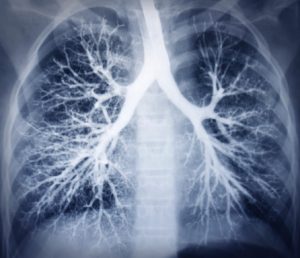 November is Pulmonary Hypertension Awareness Month, so we present our articles that discuss pulmonary hypertension and related topics, too, including lupus, Sjögren’s syndrome, heart attack, exercise, and high blood pressure.
November is Pulmonary Hypertension Awareness Month, so we present our articles that discuss pulmonary hypertension and related topics, too, including lupus, Sjögren’s syndrome, heart attack, exercise, and high blood pressure.
Pulmonary hypertension is a type of high blood pressure in the arteries of the lungs. In patients with pulmonary hypertension, the heart has to work harder to supply blood to the body, and as a result it becomes weak over time.
Lupus affects lungs, leads to pleuritis, pneumonitis, and pulmonary hypertension
Advertisement
Lupus is an autoimmune disease that often impacts the lungs, and research shows pulmonary complications with this disease can lead to pleuritis, pneumonitis and pulmonary hypertension.
When a person has a lung infection, it usually affects their airway and lung tissue, but with lupus it seems that it can impact all compartments of the lungs and involve pleuritis, which is inflammation of the linings around the lung, as well as pulmonary hypertension (high blood pressure that occurs in the arteries in the lungs). Those with lupus and lung problems can also get pneumonitis, inflammation of the walls of the alveoli in the lungs, normally caused by a virus. Continue reading…
 Sjögren’s syndrome may raise heart attack, stroke, pulmonary hypertension risk
Sjögren’s syndrome may raise heart attack, stroke, pulmonary hypertension risk
Sjögren’s syndrome may raise the risk of heart attack, stroke, and pulmonary hypertension, according to research. Sjögren’s syndrome is an autoimmune inflammatory disease. The body’s immune system attacks the glands where fluid is excreted, like the tear glands or salivary glands. When this occurs, the eyes are unable to produce tears, the mouth becomes very dry, and other areas that excrete fluid also become dry. Sjögren’s syndrome is commonly seen in individuals who have other rheumatological diseases, such as rheumatoid arthritis or lupus. The researchers believe that it is the inflammation caused by Sjögren’s syndrome that contributes to the heightened risk of heart attack.
Principal investigator Dr. Antonio Aviña-Zubieta said, “This is the first general population-based cohort study comparing the relative risk of heart attacks and strokes in patients with new Sjögren’s syndrome with age, sex, and entry-matched controls; previously we only had limited data on the relative risks in this specific patient group.” Continue reading…
 Pulmonary hypertension patients can benefit from exercise training: Study
Pulmonary hypertension patients can benefit from exercise training: Study
A new study shows that exercise training as a treatment is a safe way to improve the quality of life for people who suffer from pulmonary hypertension. Pulmonary hypertension affects roughly 10 to 15 out of every million Americans and has an annual mortality rate of 15 percent.
The condition occurs as a result of high blood pressure which affects the heart and the lungs, often making the patient dizzy or tired and can make it more difficult to breathe. It can even lead to heart failure if it is left untreated. Continue reading…
 High blood pressure (hypertension) may be an autoimmune disease
High blood pressure (hypertension) may be an autoimmune disease
Medical experts have known for a long time that there are about 80 different types of autoimmune disease, and new evidence suggests that we might be able to consider high blood pressure or hypertension as another autoimmune disease.
High blood pressure or hypertension is a common cause of heart attacks, strokes, and kidney failure, making it the biggest risk factor for disability and death around the globe. While a lot of investigation has pointed to obesity, high stress, and diet as contributing to the disease, an exact cause has never really been established. Living with high blood pressure gives sufferers an uneasy feeling. This latest research sheds more light on the condition. Continue reading…
 Pulmonary hypertension: The complete guide
Pulmonary hypertension: The complete guide
Advertisement
What is pulmonary hypertension? If you’ve received a diagnosis, you’ll know it’s serious. It’s different from having regular high blood pressure. Specifically, the diagnosis means you have high blood pressure in your arteries that go from your lungs to your heart. People often describe it as high blood pressure in the heart-to-lungs system.
If you’ve got high blood pressure, you likely know the drill: quit smoking, limit alcohol, cut back on salt and sugar, eat more potassium, de-stress, and commit to regular activity. Make these habitual, and you’re in good form to keep your blood pressure in the healthy range.
But what about pulmonary arterial hypertension (PAH)? What are the causes and risk factors, and what can you do to get it under control? Continue reading…
